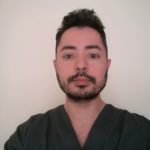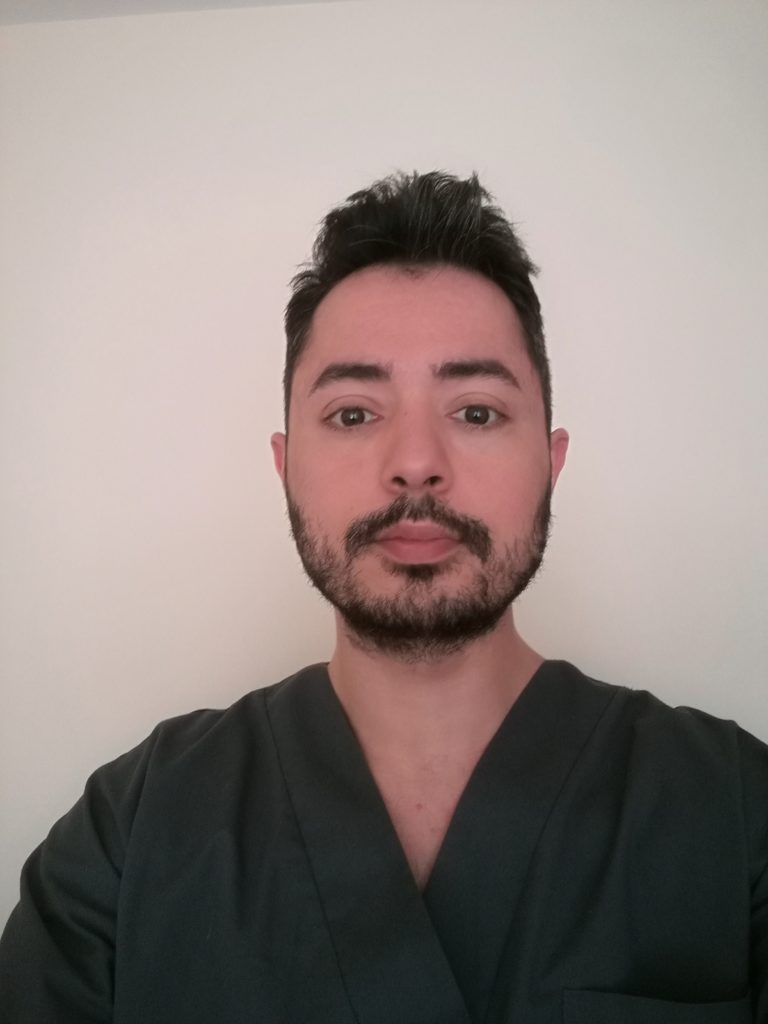Case-based discussion
Objective Activity
Case-based discussions are ‘great to discuss concerns, encourage and find reassurance in our own practice’
Hugo Saad
Hugo Saad graduated from Osteobio, School of Biomechanics Applied to Osteopathy, in Cachan, France, in 2014. He then decided to pursue a Master’s in Sports and Clinical Biomechanics at Liverpool John Moores University, which is partnered with his school in France. After finishing his Master’s in 2015, Hugo decided to register with the GOsC and stay in Liverpool, where he shares a practice with another osteopath. He talks us through how he went about his first formal case-based discussion.
How did you prepare?
I tried to figure out a case where my main issue was not which technique to use on a patient, because I figured different osteopaths have widely different ways of treating a patient, based on their original school and what kind of course they have taken after graduating, and it would be difficult for us to agree.
What type of case did you discuss?
We discussed the case of a 32-year old woman suffering from widespread chronic pain for around 15 years. My main issue was how to effectively communicate relevant elements about chronic pain to help that patient, as this is part of the modern management of such conditions.
Why did you decide to focus on that?
As I try, as much as possible, to keep up with the evidence that relates in any form to the practice of osteopathy, I realise modern management of chronic pain involves looking at the patient as a whole – that is, nutrition, weight, drinking habits, smoking, stress, depression, physical activity and not to just focus on physical examination findings. This is often challenging to do because, in the past, a lot of us have been taught to focus and make a diagnosis based on physical elements. Yet, even early in my career, I felt as if patients presenting with true chronic pain – which is often widespread and moving around – were difficult to treat, and I think this is a sentiment many osteopaths will share. I have written more about this matter on my blog.
How did you go about it?
We communicated over Skype. I was partnered with an osteopath from Singapore, so we agreed on a midday conversation, which would be late at night for him. We talked for about an hour – half an hour on each case.
Any initial hopes or concerns?
My only concern was that, if we were to discuss treatment, we would never agree – but this ended up not being the case, as we all understand that different forms of manual treatment can have similar effects.
How will your learning impact on your future practice?
What we agreed on was that discussing chronic pain with a new patient, who has had no previous information on it, was a subject too complex and too new at first. We agreed, instead, that focusing on building a patient-osteopath relationship based on trust was more important for a first appointment. I suggested that I could point patients who desire to understand pain better to a website designed specifically to do that and that I could discuss it with them at the next appointment, allowing them some time to digest the information. This is what I did with the next patient I saw with a similar condition, and I believe it was very well received and made a real difference for that patient.
Any tips for giving and receiving constructive feedback?
The online tutorial we had with the GOsC before discussing cases addressed this. The main point was that it’s always better to start and end with a positive.
How did you link your learning points to the OPS themes?
We used one of the two suggested templates, from the GOsC. I think linking to the OPS is pretty straightforward. In this case: theme A – communication and patient partnership; A1: you must have well-developed interpersonal communication skills and the ability to adapt communication strategies to suit the specific needs of a patient; A3: give patients the information they need in a way that they can understand; and A6: support patients in care for themselves; to improve and maintain their own health.
Would you carry out case-based discussions again?
I am indeed looking to continue discussion of cases. It is a great experience – to discuss your concerns, or even just to encourage each other and to find reassurance in our own practice. I did not find a downside to it. I am hoping that this will lead to more initiatives of the same nature, as I found it a very rewarding experience. I think the effective management of chronic pain is going to be my main focus in the near future, as it is challenging, and more and more patients are suffering with some form of it.

About the author
Hugo Saad
Hugo Saad graduated from Osteobio, School of Biomechanics Applied to Osteopathy, in Cachan, France, in 2014.

